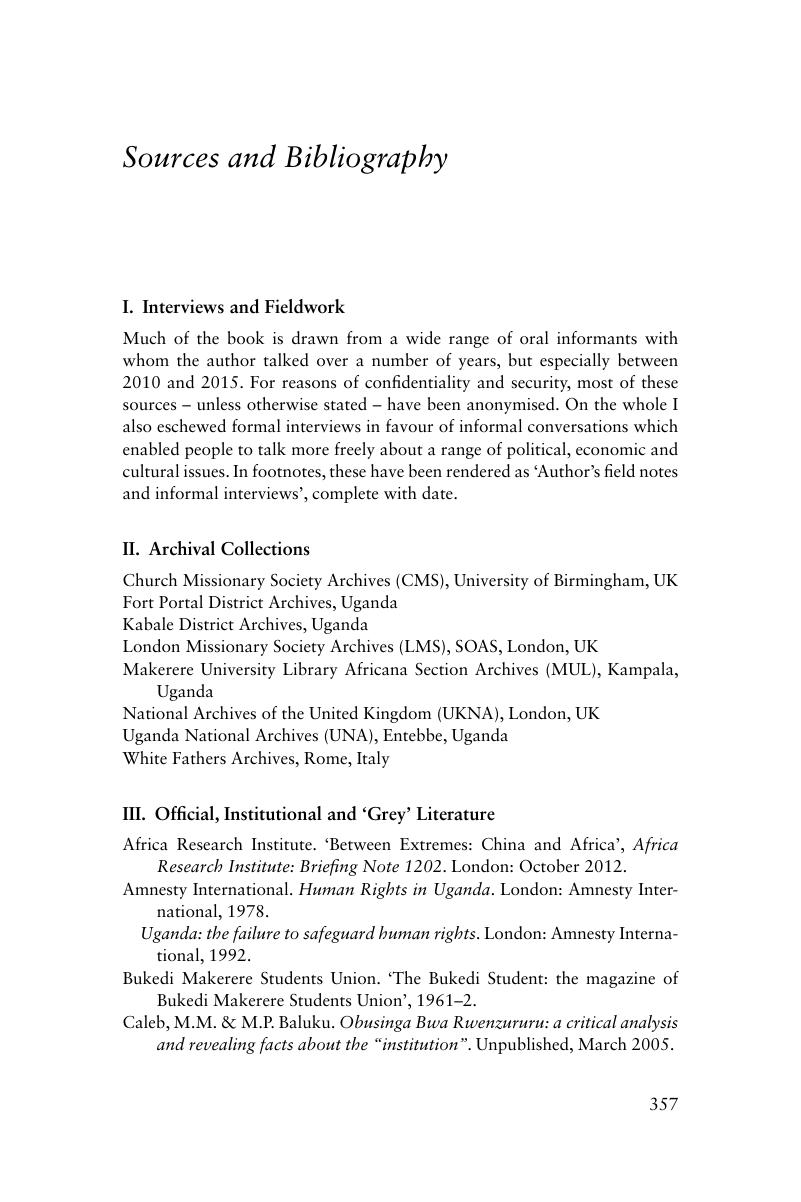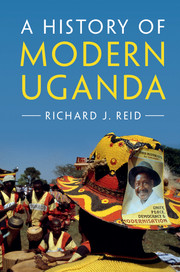Book contents
- A History of Modern Uganda
- A History of Modern Uganda
- Copyright page
- Contents
- Explanations, Apologies and Acknowledgements
- Maps
- Frontispiece
- Prologue
- 1 Refractions
- 2 Pensive Nation
- 3 Rukidi's Children
- 4 The Adventures of Zigeye and Atuk
- 5 Kings and Others
- Epilogue
- Glossary
- Sources and Bibliography
- Index
- References
Sources and Bibliography
Published online by Cambridge University Press: 16 March 2017
- A History of Modern Uganda
- A History of Modern Uganda
- Copyright page
- Contents
- Explanations, Apologies and Acknowledgements
- Maps
- Frontispiece
- Prologue
- 1 Refractions
- 2 Pensive Nation
- 3 Rukidi's Children
- 4 The Adventures of Zigeye and Atuk
- 5 Kings and Others
- Epilogue
- Glossary
- Sources and Bibliography
- Index
- References
Summary

- Type
- Chapter
- Information
- A History of Modern Uganda , pp. 357 - 394Publisher: Cambridge University PressPrint publication year: 2017



